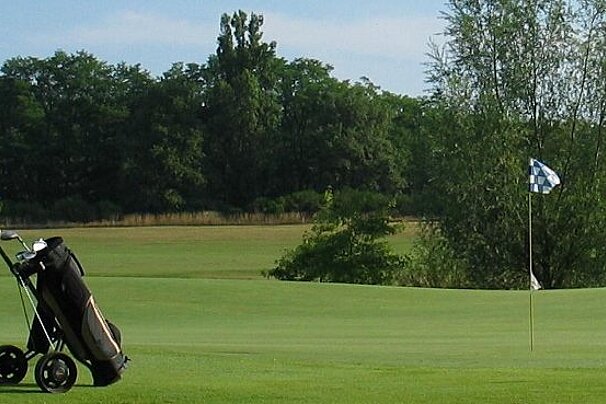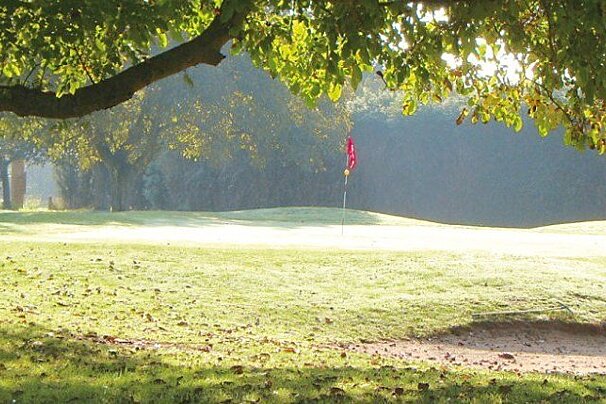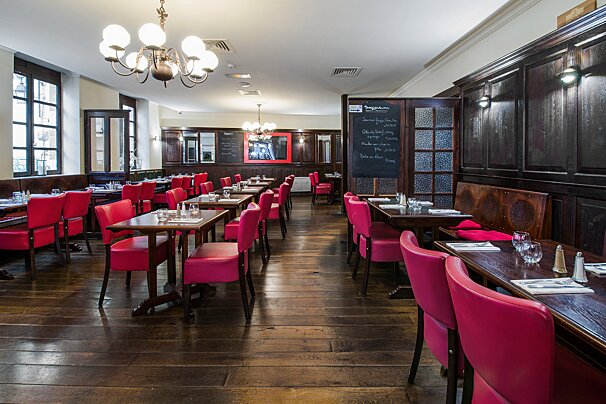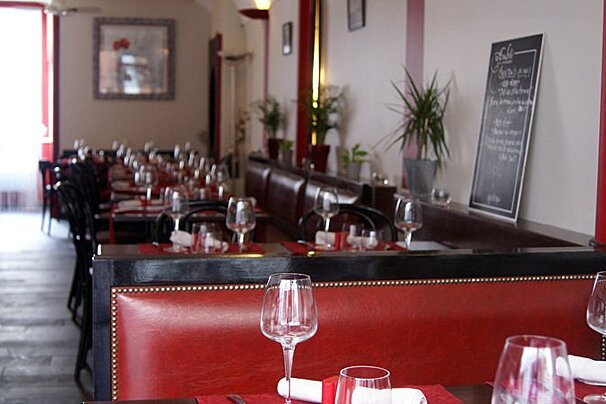
Domaine de Vaugouard Golf Course, Fortenay-sur-Loing
This 18-hole course is set in the grounds of an 18th-century château which is now a leisure complex with outdoor pool and tennis courts as well as a charming hotel.

© Gizeux Chateau, Gizeux

© Gizeux Chateau, Gizeux
Homely restored château
This elegant château is splendidly laid out and built with in classic white stone and blue slate. It has been meticulously restored over the years and the current owners are passionate about ensuring its heritage is retained. Be sure to visit the François I gallery and the traditional kitchen. A homely place to stay.
Each of the rooms have been designed and dedicated to ladies who have had an impression on the Chateau. For instance, the room of Anne de Frezeau, who lived in the chateau in the 17th century requested that artists paint 400sq metres of wall spaces representing the famous Kings' palaces, in a now unique gallery.
Dinner is available, and home cooked using regional products and is reasonably priced. Breakfast is a traditional continental with tea and coffee.

This 18-hole course is set in the grounds of an 18th-century château which is now a leisure complex with outdoor pool and tennis courts as well as a charming hotel.

The golf course of the Château Cheverny has been constructed in the 142 hectares of the historic hunting grounds of the château.

This relatively new course, set in beautiful Saumur, is a pleasant 9-hole round if you're searching for a change from historical monuments and châteaux.

Balloon Revolution offer flights over the Touraine region of the Loire Valley allowing you to discover its beautiful châteaux from the sky. Usually launching from the grounds of one of the châteaux, it's an unforgettable experience.

This theme park is a historical tour around a medieval city, an 18th-century village and a year 1900 town square. It also has a number of historical shows reenacting Ancient Roman gladiator fighting, attacks from the Vikings and medieval adventures. The summertime evening shows are an explosion of colour, lights and entertainment. An incredible spectacular.

Located on the banks of the river Loire with Sancerre hill in the background, this course in the midst of century-old trees, ornamented by natural water hazards, is considered one of the most attractive golf courses in the centre of France. An 18-hole course with bunkers and water hazards which offer some interesting problems. There is also a pro-shop, restaurant, 6-hole practice course, driving range and putting green.

This excellent restaurant in Orléans serves traditional French fare using quality local produce.
Sample their gourmet burgers, inventive salads, sweet & savoury pancakes and delicious sundaes.
This small restaurant in Angers serves traditional French cuisine made with locally-sourced fresh market ingredients explained on the classic chalkboard menu.

This cute traditional French restaurant in Blois serves good quality food on, as the name suggests, red benches! The dishes are innovative and work well, and the is atmosphere charming.
This old post house dating from the 19th century has managed to retain a unique style where beams, bricks and tiles combine with modern comforts.
Charming little coffee shop and lunch spot offering good food on its terrace or tucked away in the cellar. Look out for the decadent dessert selection.
This sleeping beauty château, overlooking the Indre river, is thought to have inspired the children's book written by Charles Perrault in the 17th century. Parts of the existing château date back to the 15th century - unfortunately all aspects from earlier dates have been destroyed. However, this picture-book Gothic château with some Italianate features is in immaculate condition. Its interior has been maintained in authentic style and it has a sumptuous king's chamber decorated in gold leaf, just in case a king happened to be passing and drop in!
At the end of the 10th century Foulques Nerra conquered the site of Langeais and established a château on the promontory. All that remains of the original château are a few traces of the keep. During the second half of the 15th century, Langeais was considered a strategic site. Charles VII's son, Louis XI, therefore decided to build a château there in the face of hostilities from a group known as the League for the Public Weal; dissidents from the high aristocracy. Importantly in 1491, the château was the scene of the dawn wedding between Charles VIII (Louis XI's son) and Duchess Anne of Brittany. The marriage put an end to the strife between France and Anne's independent duchy and paved the way for Brittany eventually being incorporated formally into the French kingdom.
Between Saumur and Chinon, on the hillside along the Loire River, you will find Le Saut aux Loups. It was favoured in prehistoric times by men and wolves who found a home here. Since the Middle Ages, there have been limestone quarries in the hillside for the stone required to build the châteaux the region is so famous for. The quarrymen also built the troglodyte houses as lodgings and these have been preserved in their original state here at Le Saut aux Loups. The caves are now home to extensive mushroom production lines and here you can visit their 800 metres of underground galleries before trying the speciality of the house, galipettes, delicious stuffed mushrooms, in their restaurant.
Villandry was completed toward 1536 and was the last of the large châteaux built in the Loire Valley during the Renaissance. It was built by Jean le Breton, one of François I's finance ministers, whose coat of arms can be seen on the gable of the left-hand dormer window. Villandry stayed in the le Breton family until 1754 and then became the property of the Marquis de Castellane, the King's Ambassador, who came from an illustrious noble family from Provence. He built the Classical style outbuildings that you can see on either side of the front courtyard. He also redesigned the interior of the château to meet the standards of comfort of the 18th century. Its redesigned grounds include an impressive vegetable garden constructed in the early 20th century. A cook's delight, these vegetables are now available to buy in season.
Overlooking the crossroads of the three provinces of Anjou, Poitou and Touraine, the rocky spur upon which the royal fortress of Chinon stands is a strategic and much coveted location that has been occupied since Roman times. There has been a castle on the site since at least the 10th century when Theobald the Trickster, Count of Blois, built a tower there. But it was not until 1154 that Henry II, Count of Anjou and King of England, set the fortress on the road to its present grandeur. The fortress began its fall into decay in the 17th century, under the ownership of Cardinal Richelieu. Now, after four years of restoration work on a scale unprecedented elsewhere in Europe, the fortress has the military splendour and cohesiveness that it enjoyed in bygone days.
Owned by the Filliatreau family, this grand manor is part troglodyte cave. Once the dwelling of lords, it has a fine chapel and extensive vineyards producing some of the best Saumur-Champigny wines in the area.